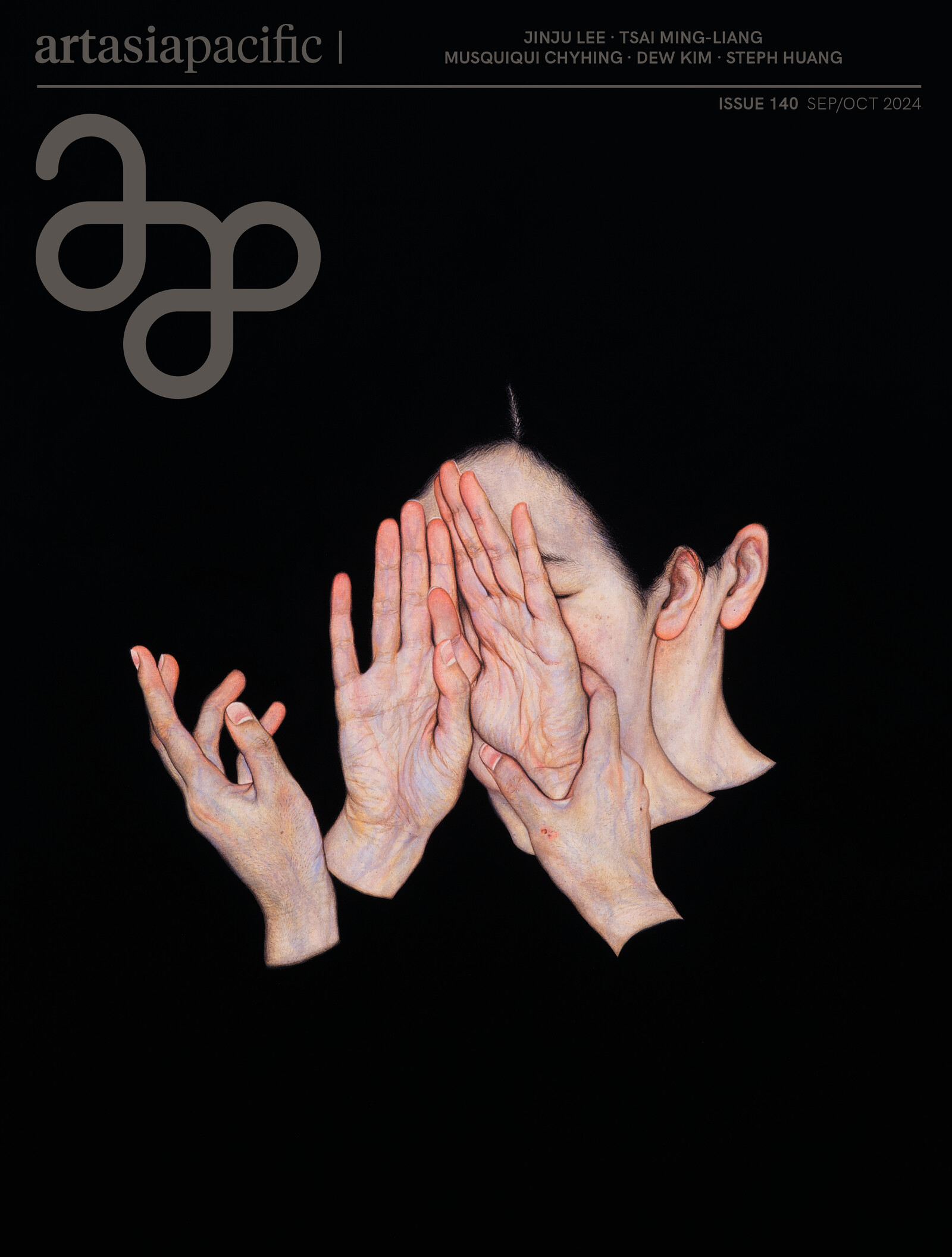Issue 140
September 3, 2024
In an era creaking under the weight of too much content, we are increasingly at the mercy of the immediate. This often manifests itself as a rigidity of meaning, whether in ideology, identity, or the personal as political. But many artists see value and significance in mystery and hesitancy, and are attuned to the myriad complexities of the world and of the self. These creators champion reflection, contemplation, and the timelessness of things.
Our cover feature looks at Korean painter Jinju Lee, who creates strange and uncanny scenes loaded with symbolism, oneiric detail, and seemingly surreal elements. Lee has built her most arresting works since the late 2000s in large-scale tableaux and, more recently, in dark, intimate paintings featuring isolated hands and faces, often mirrored or obscured, that evoke the subconscious.
No less revealing in terms of behaviors we hide and repress, especially when it comes to states of loneliness, sexuality, and family relations, are the films of the Malaysian-born, Taiwan-based director Tsai Ming-liang. Now in his sixties, he is one of the most revered auteurs of his generation, and he relates how over the course of four decades he has formed an intimate collaboration with the actor Lee Kang-sheng, who has appeared in all of his feature films to date.
A special feature surveys eight emerging painters who represent a new generation filled with a powerful sense of urgency, from Amanda Ba and Mikey Yates to Oscar Yi Hou and Un Cheng. In scenes of the ordinary overlaid with strong psychological overtones and through our perceptions of the body (as seen by the self and others), these painters are playfully subverting cultural categories and norms.
For Inside Burger Collection, curator Qu Chang reflects on the subject of mourning that runs through the practice of Isaac Chong Wai, as the essay interweaves passages from two 20th-century cultural theorists, Roland Barthes and Judith Butler, with her own diary entries.
Our Profiles discover the multidisciplinary works of Musquiqui Chihying, who combines literature, theory, technology, and pop culture, as well as the queer performative works of Dew Kim, who riffs on geopolitics and religion with infusions of sadomasochism. In One on One, the Dresden-based artist Rao Fu expresses his admiration for the sublime landscapes of German Romantic painter Caspar David Friedrich.
For this issue’s New Currents, we spotlight Seoul-based Hwang Sueyon, who reinterprets social-media content into sculptural works that she likens to physical performances; Choi Goen, also from Seoul, who unearths the invisible infrastructure sustaining digital technology through her sculptures; and London-based artist Victor Lim Seaward, who reflects on the legacy of colonialism’s symbolic power.
In Dispatch we hear from Jeju Island about the tireless work of the artist-activists resisting the overdevelopment of Korea’s major tourist destination. The Point looks at the recent closure of an LGBTQ+ exhibition in Istanbul, amid a larger crackdown on civil-society initiatives. Our Previews cast an eye toward exhibitions in Korea including the 15th Gwangju Biennale as well as two major upcoming showcases for Korean artists in London.
This issue in Reviews, we visit South African artist William Kentridge’s major retrospective at the Taipei Fine Arts Museum, as well as solo showcases at museums and galleries from Sydney, Tokyo, Seoul, Manila, Hong Kong, and Los Angeles. And finally, in Where I Work, AAP visits the temporary South London studio of Steph Huang as she prepared for her exhibition “See, See, Sea” at Tate Britain, and we hear how she conceives of an exhibition as similar to a game of chess, where she imagines herself as both players.
A digital edition of the full AAP issue 140 is now available for purchase on Zinio, Google Play, iTunes, and Magzter.
